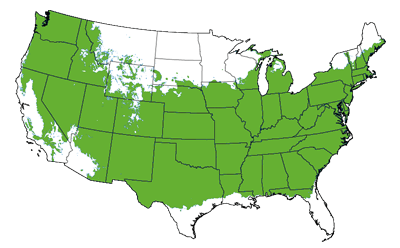White Weeping Cherry Tree
Product Details
 Growing Zones 5-8
Growing Zones 5-8
| Soil Type | Well Drained |
| Sunlight | Full |
| Drought Tolerance | Semi |
| Mature Height | 20-30 Feet |
| Mature Width | 15-20 Feet |
| Growth Rate | Moderate |
| Bloom Color | White |
| Shipping Restriction | AK, AZ, CA, CO, HI, ID, OR, WA |
For springtime color and year-round beauty, the White Weeping Cherry Tree is a wonderful choice! This tree, with its snowy-white blooms in spring, adds drama and flair to any yard. Plus, the downward sloping branches give that weeping quality that transforms your space.
This tree is both beautiful and hardy! It can withstand most soil types, climates, and conditions. Just give it a sunny spot to grow, and it can thrive!
Though it can reach heights between 20-30 feet, it also can be pruned for smaller-sized areas. This is a perfect tree for large open spaces, containers, or really anywhere you want!
It’s a spectacular statement piece, and your neighbors will be in awe! Turn your yard or garden into a fairytale dream with this one-of-a-kind tree. The falling blooms will be just like snow in spring!
Order your own White Weeping Cherry Tree today!
What color is the tree when not in bloom?
Without the white blooms, this tree is a spectacular green, guaranteed to provide lovely color and a stunning shape!
Does this tree grow edible cherries?
No, the fruit, flowers, and foliage are strictly ornamental!
Planting
This tree grows best in moist, well-drained, acidic soil (around 6.5 to 7.0 pH) in a spot that receives full to partial sun (around 6-8 hours per day).
Dig your hole just as deep and twice as wide as the root ball. Leave a small mound of dirt in the center of the hole to set the root ball on and carefully spread the roots in the hole. You’ll want to keep the crown (tip of the root ball) of the tree roughly an inch above the surrounding soil level. If it doesn’t reach that point, just add a bit more dirt to the mound underneath.
Watering
Water the tree when the top 2 inches of soil dries (a slow trickle with a garden hose for about 10 or 20 minutes is recommended so the water doesn’t bead away from the intended watering area). This could be about twice a week in the summer, or every three weeks in the fall. Watering depends on several factors such as the soil type, rainfall amounts, and temperature.
Fertilizing
This tree will not require fertilizer for the first two years. Heavy mulch around the base of the tree protects and nurtures the soil as well. When you are ready, fertilize the tree with nitrogen. Apply 1/10 pound of actual nitrogen per year for each year of the tree’s age, with a maximum of 1 pound per year. Apply it once in the spring, or spread the nitrogen amount into 2 to 4 equal applications over the spring and summer.
Maintenance
Prune the tree during dormancy in winter to remove dead branches. Removing the current year’s old, faded flowers and fruit clusters will promote flower buds for the following season.













